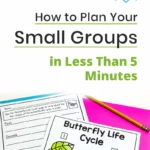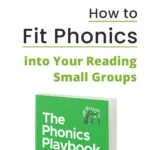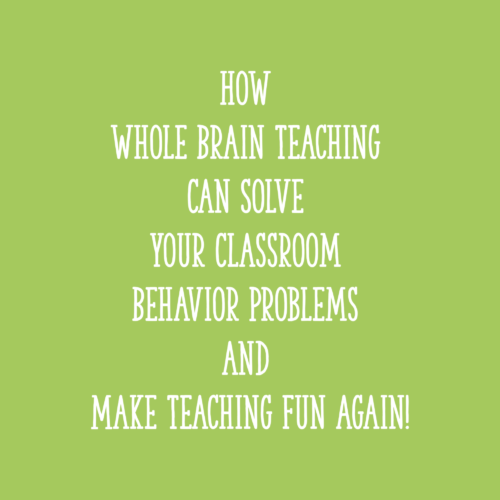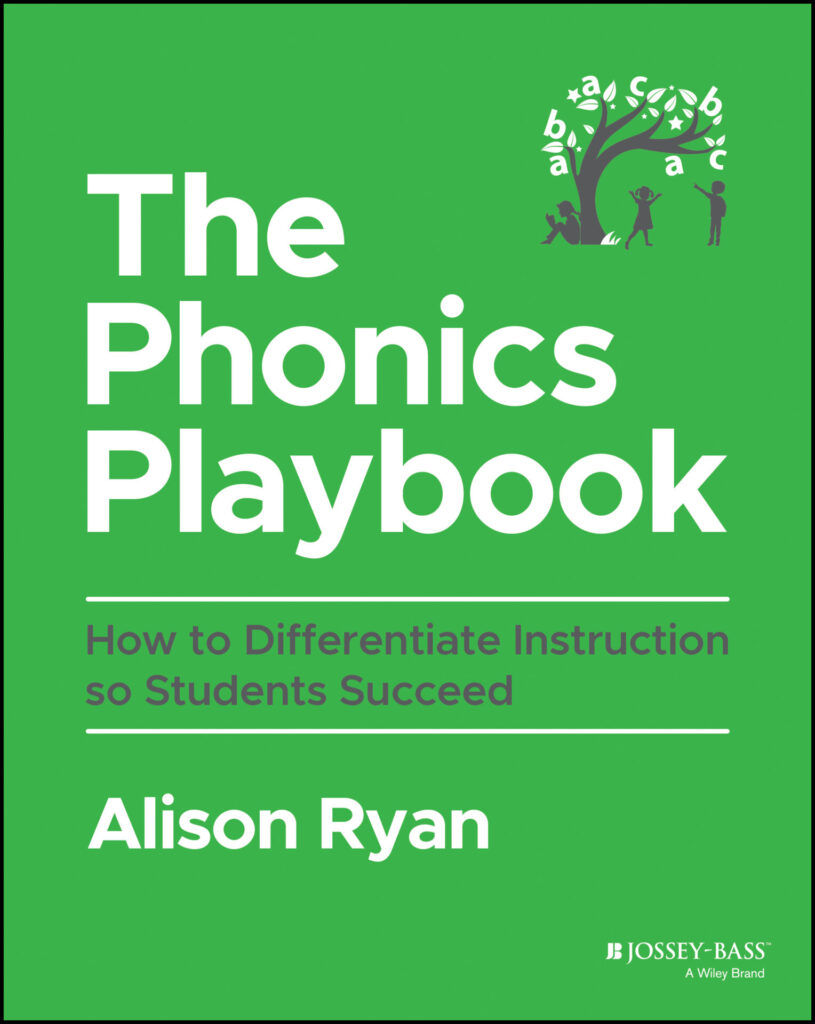Small group time is super important because it gives you focused time to work more closely with students. In that small group setting, it can be easier to identify strengths and areas for growth, so that you can close any gaps. However, it can also be very time-consuming to plan out small groups. I know some teachers with up to 6 different small groups, and if they’re meeting 5 days a week…that’s 30 plans they’re preparing, each and every week!!
In education, every minute counts – both when it comes to instructional time and also when it comes to teacher prep time! But I have good news for you – the toolkit I’m going to explain in this post will help you plan your small groups MUCH more quickly!
In this blog post, I’ll go over a resource I use that helps strategically plan my small groups. The materials I’ll be discussing come from my Literacy Clubs. (You can access a Free Trial HERE.)
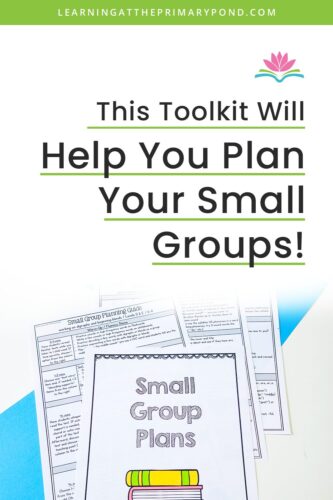
Small Group Toolkit
Included in the Kindergarten Literacy Club and the 1st & 2nd Grade Literacy Club websites, you’ll find a small group toolkit to help you plan each part of your small group lessons. Kindergarten through 3rd grade levels are included. This will save you lots of time and take the guesswork out of planning any lessons that you create!
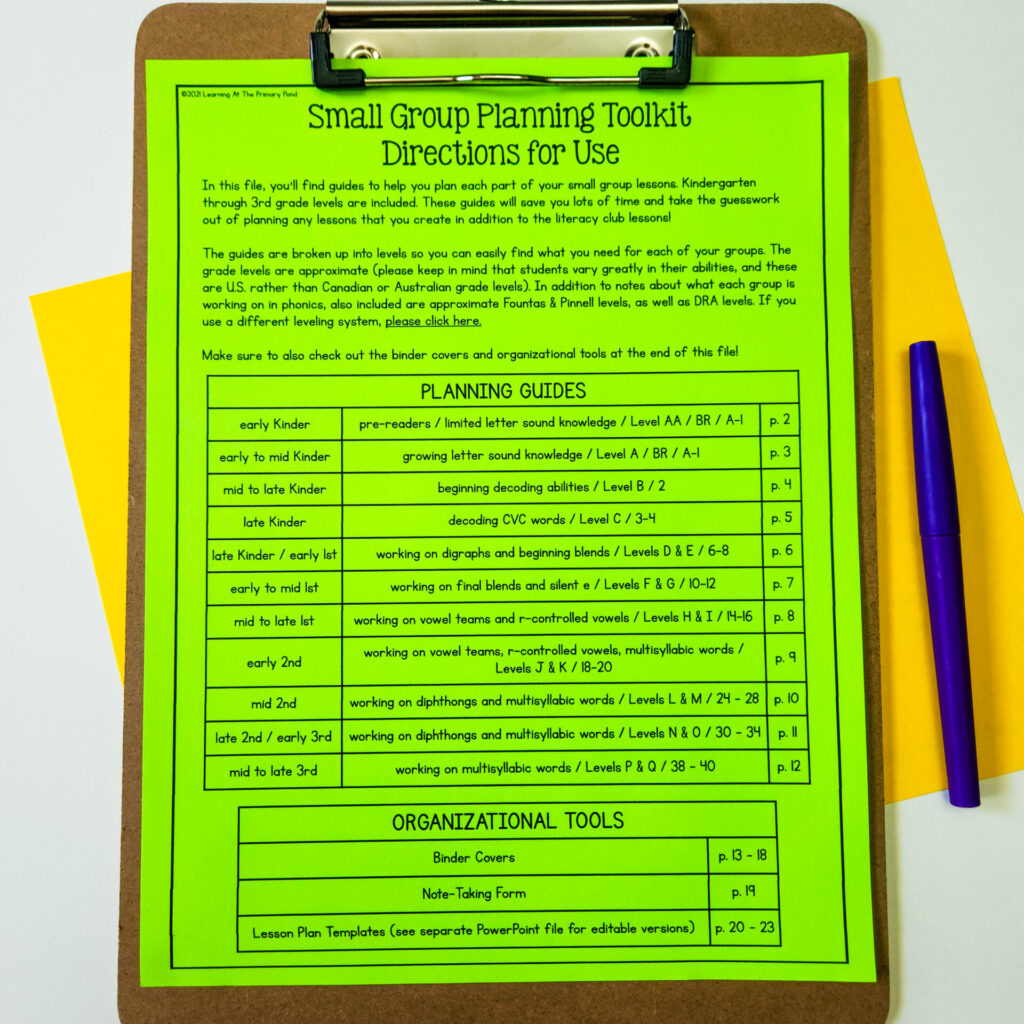
The guides are broken up into levels so you can easily plan what you need for each of your groups. The grade levels are approximate (please keep in mind that students vary greatly in their abilities, and these are U.S. rather than Canadian or Australian grade levels).
The Literacy Club guidelines for its own levels are as follows:
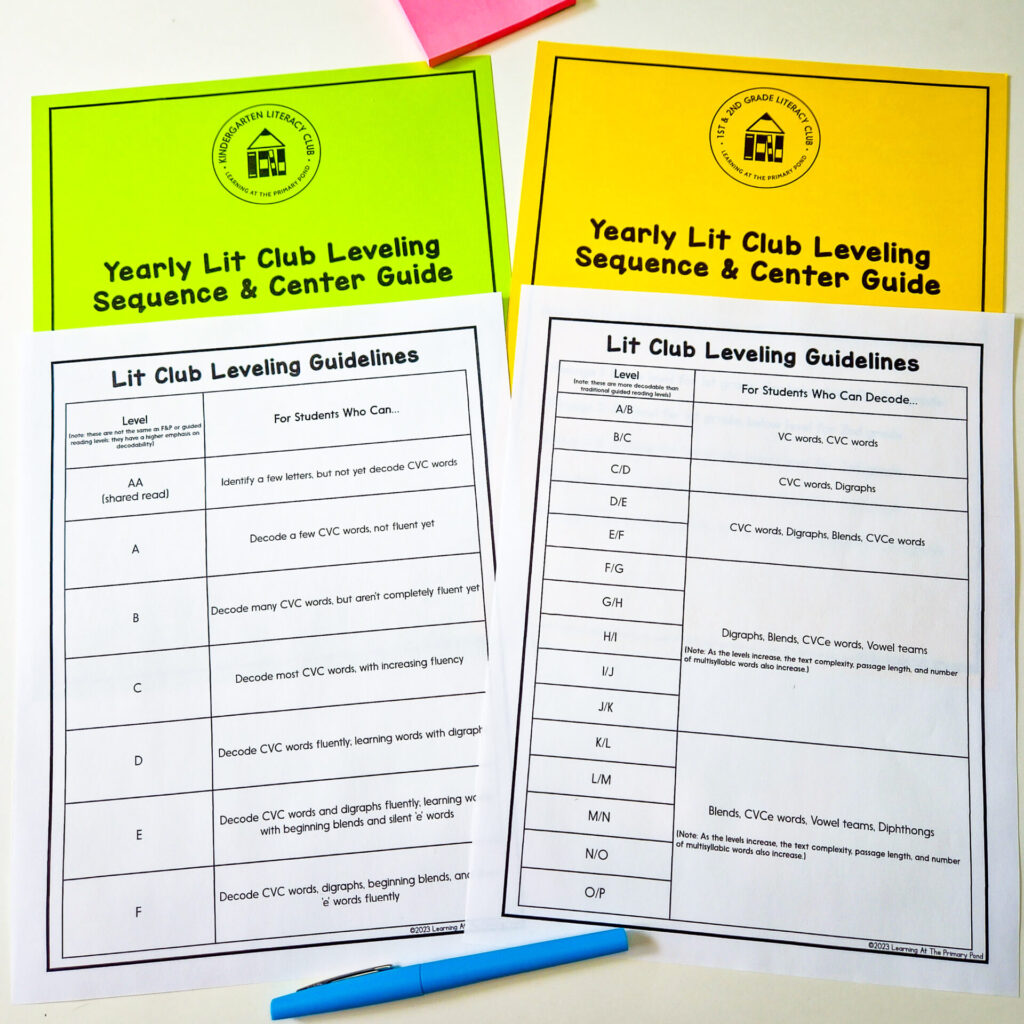
Parts of the Small Group Plans
At each different level, the plan is broken down into different sections. Note that there are approximate time stamps provided for each part of the lesson. The range of time given will depend on which activities you choose for a particular day as well as how much time you have allotted for that particular small group. (i.e. If you have less time available for that day or that group, you may have to stick to the lower end of the time approximation for a given part.)
Warm-Up / Fluency Items
The first part of the lesson includes some type of review for warm-up. What that review is will depend on students’ abilities and what you have already taught. Choose 1-2 options from the suggested list. Depending on the level, these warm-up activities may include:
- Trace and say letter sounds on the table, in the air, or in sand
- Play “Guess my word” where you say the phonemes in a word and students say the whole word
- Practice decoding a few CVC words as a group
- Write a few high frequency words on whiteboards
- Listen to 1 child read (and you could complete a running record) while the other students reread familiar texts for fluency
New Text Introduction
After the warm-up, move into the introduction. During this time, you choose a quick activity to introduce the text, plus 1-2 decoding supports as needed. These intro and decoding items can include:
- Ask students to make a prediction from the cover and title
- Tell students briefly what the book will be about and see if they have any background knowledge on the topic
- Model blending to read a word or two
- Pre-teach any words students will not yet be able to decode
- Have students look for high frequency words they already know in the text
Reading and Discussion
During this time, depending on the students’ level, they will either whisper read or silent read the text. If extra support is needed at the earlier levels, you could choral or echo read part of the text.
Then, afterward, discuss the text. Questions/activities for this may include:
- Retell / summarize the text.
- What happened in the beginning/middle/end?
- Identify the characters, setting, problem, and solution.
- What did you learn from this book?
- Why did the character ______?
- What did you learn from this text feature?
- What is the most important part of this text, and why?
You could also discuss any vocabulary words from the text that students may not know.
During this time, you can also cover a teaching point such as:
- Read all the way through a word; pay attention to the word ending.
- Make sure that you understand what you’re reading; if not, go back and reread.
- If you get stuck on a word, break it up into its parts or syllables.
- Read in smooth phrases.
- Read with expression (character feelings, punctuation marks, etc.)
Phonics / Phonological Awareness / Writing Activities
After the discussion of the text, you can add in 1-2 additional activities. These activities may be directly related to the text, or they may provide an opportunity to differentiate your phonics instruction by focusing on a needed review/new skill for that particular group.
Here are a few example activities:
- Sentence cut-apart (cut apart a sentence written or typed out; students reassemble it and count the words) – I use this mostly in Kindergarten or early 1st
- Students write words with a specific pattern (i.e. CVC word, digraph, silent e) or a very short sentence on a whiteboard (dictation)
- Read words with a specific pattern written on paper or whiteboard
- Go on a word hunt for a particular pattern back in the text (i.e. “Find all the words with a double final consonant.”)
- Identify common homophones or homographs.
- Break apart multisyllabic words.
- Read / write possessives and contractions.
- Work with words with prefixes and suffixes.
Tips for Organizing Your Lesson
The amount of time that students will need to read the text can vary significantly. If your students decode slowly or you don’t have enough time for them to finish reading a new text in one sitting (e.g., the passage is a lengthy one), adjust the above sequence accordingly. For example, you might have students read half of the text on Day 1, and the other half on Day 2, then have them reread the entire text on Day 3.
There are different ways you might divide up your time, but here’s a suggestion:
| DAY 1 | DAY 2 | DAY 3 |
| Introduce new text | 1 warm-up activity | 1 warm-up activity |
| Students read new text | Students re-read the same text from Day 1, focus on building fluency | Students re-read the same text from Day 1, focus on building fluency |
| Discuss any tricky word(s) /decoding instruction | Ask more challenging comprehension questions | Have students write 1-2 sentences about the text |
| Have students retell /answer basic comprehension questions | Comprehension strategy instruction | Vocabulary routine – create oral or written sentences |
| Introduce relevant vocabulary cards | Review vocabulary words | If time permits, phonics activity |
| 1 follow-up activity (phonological awareness, phonics, etc.) | 1 follow-up activity (phonological awareness, phonics, etc.) |
Or, if you feel that you’ve made the most of the text after 2 days, feel free to move on to a different text rather than spend 3 full days on the text.
Last but not least, remember that these are simply suggestions – you’ll always want to make the outlines your own, based upon your students’ needs and the materials you’re using!
Conclusion
As part of the Free Trial for the Literacy Clubs, you’ll gain instant access to a free editable template so that you can easily begin planning small groups using the information outlined above! (Plus, you get instant access to lots of done-for-you small group lesson plans that are 100% ready to go!)
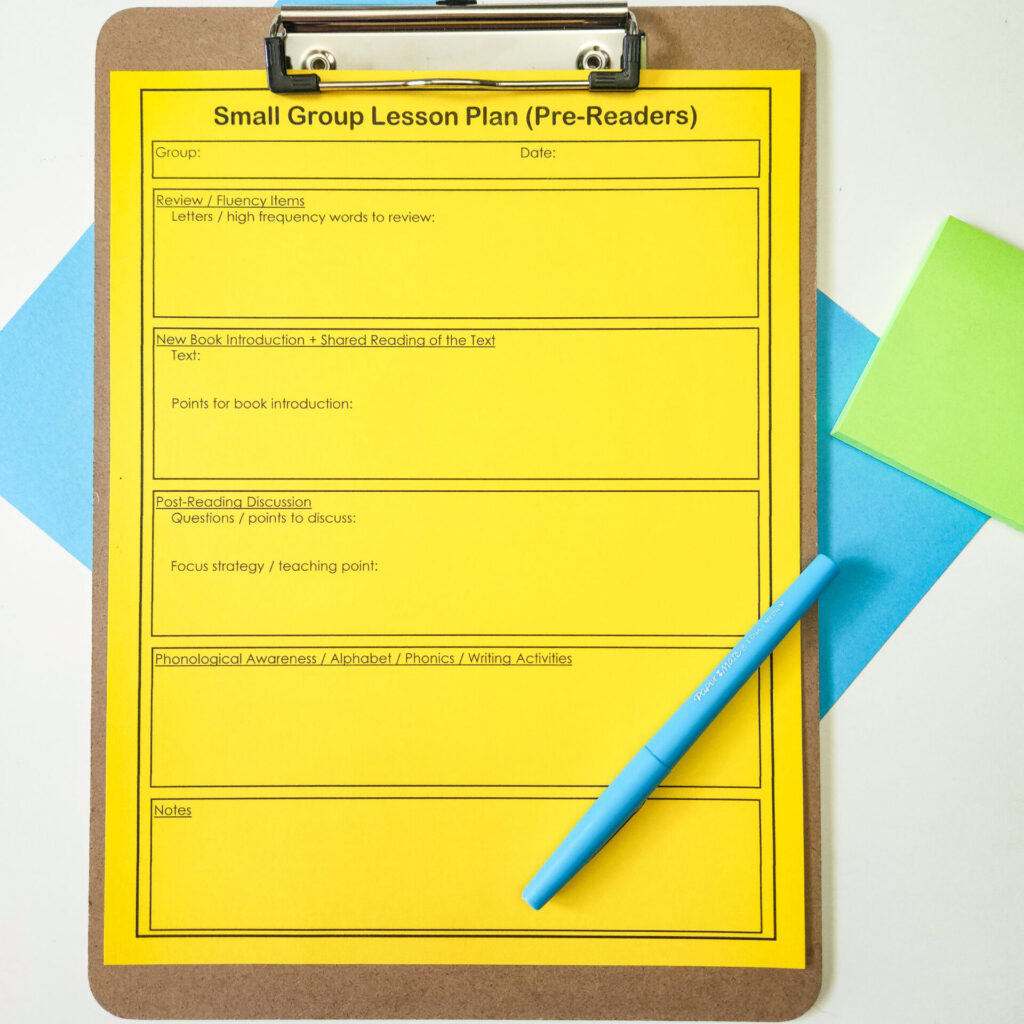
Efficient small group planning is not only possible but essential for maximizing instructional time and meeting the diverse needs of your students. Following the tips above can streamline the planning process and ensure that your small groups are purposeful and effective.
And, if you’re ready to implement the tips from this blog post but aren’t sure where to start, use this FREE small group assessment quiz to pinpoint exactly what changes to make in your small group instruction, so your groups can run more smoothly and have a bigger payoff for your students’ progress in reading!
Happy teaching!

